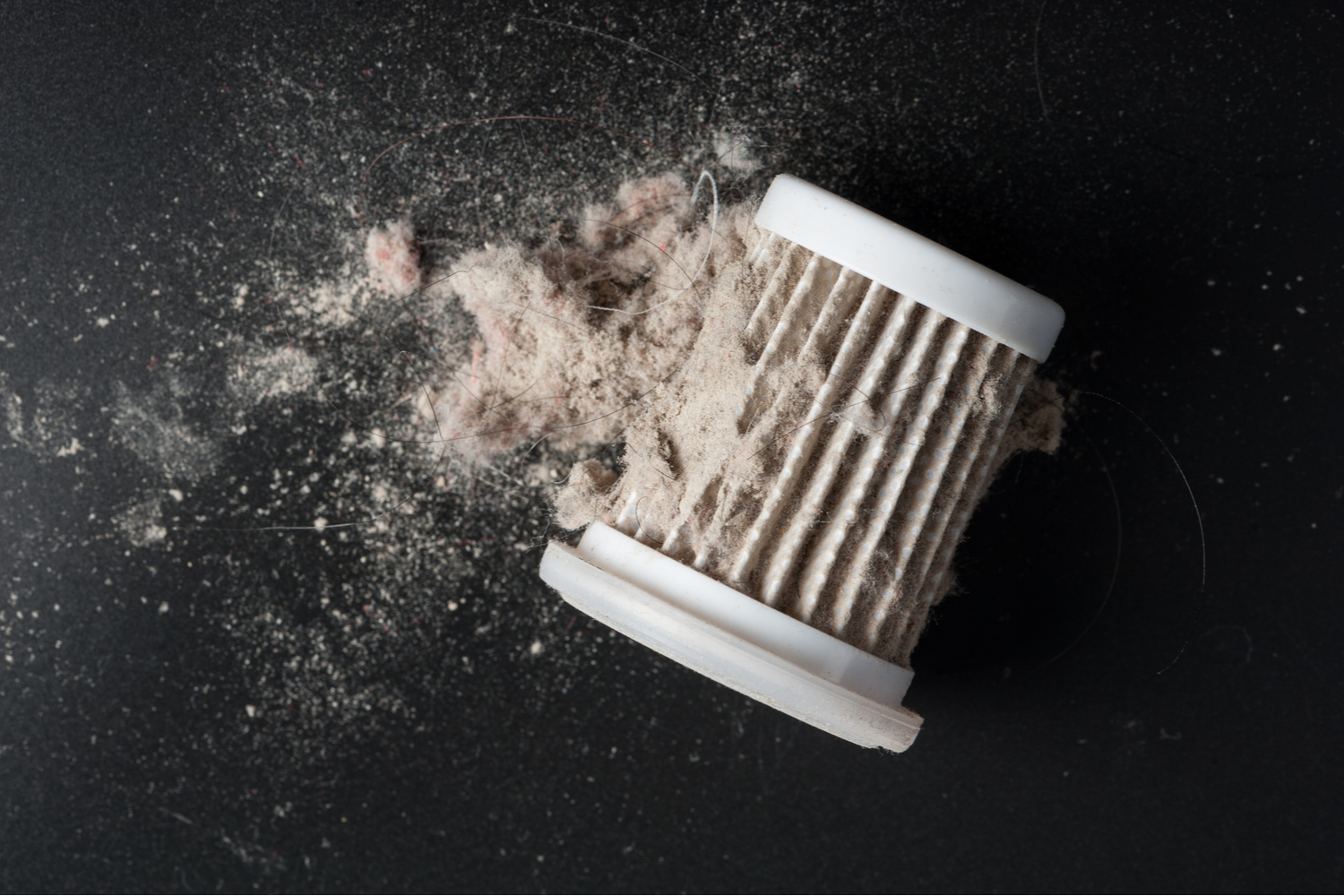What You Need to Know About HEPA Filters and HEPA Vacuums
When you think about air pollution, you probably visualize massive traffic jams and car exhaust, or industrial smokestacks pumping clouds of smoke into the air. When someone mentions air pollution, you automatically think about what is occurring to the air outside. But do you know that the air inside your home is often more polluted than the air outside? According to the Environmental Protection Agency (EPA), we spend approximately 90% of our time indoors, where the level of air pollutants is often 2 to 5 times higher than the air outside. This is why there is a movement towards the use of HEPA air filters and HEPA vacuums. But what exactly does the term HEPA mean?
A Brief History of HEPA: High Efficiency Particulate Air
In the 1940’s, as part of the Manhattan Project to develop the nuclear bomb, scientists were also required to develop a filter that would remove radioactive particles from the air. That research has lead us to today’s HEPA filters and HEPA vacuums.
In theory, a HEPA filter can remove at a minimum, 99.97% of dust, pollen, mold, bacteria, and any other airborne particles with a size of 0.3 microns and above from the air (one micron equals 1/25,000th of an inch). As a comparison, the average size of a human hair is 70 microns. The human eye can only see debris and dust that are approximately 25 microns or larger in size.
What HEPA Does for a Vacuum Cleaner
- A vacuum cleaner does its work with suction, pulling in contaminants and depositing them in a collection chamber. The vacuum can be a bagged or bagless style. The container or bag is not what is important in a vacuum cleaner, the type of filter is. The “filtered” air is then recirculated back into the room, and this is where a HEPA filter becomes important.
The average vacuum cleaner filter is fine for capturing larger-sized dust particles, it will not capture the smaller ones and will simply blow them back into the air that you breath. And for many cleaning applications, this is enough. However, if you or a member of your household suffers from a respiratory disorder like asthma, you need better vacuum filtration. The HEPA filter in a vacuum quite simply does a better job of reducing contaminants that are returned into the air.
True HEPA Filters vs. HEPA-Like Filters: There is a Big Difference
A true HEPA filter has been tested and has to meet a specific standard to be considered “true”. All true HEPA filters have a serial number assigned t them and have been proven to trap at least 99.97% of particles.
HEPA-type filters, on the other hand, are similar and resemble true HEPA filters but are not built to the same standards that true HEPA filters are. They are efficient for capturing 85% of particles, but if the particles are one micron or smaller in size, a HEPA-like filter’s efficiency rating will drop even farther. Also, a HEPA-like filter will have no serial number. Keep in mind that a true HEPA filter captures and traps particles down to 0.3 microns in size.
One other point to note; just replacing your vacuum’s filter with a true HEPA filter will not turn your vacuum into a HEPA vacuum. HEPA vacuums are sealed units that completely filter all of the air that is returned to the room.
Can a HEPA Filter Be Cleaned?
Unless the filter is labeled “washable”, the answer is no. You can remove the filter and shake as much of the dust off as you can. You could use a different vacuum to remove some of the dust. You can use compressed air to gently blow some of the dust off of it. But care must be taken. It is easy to damage a HEPA filter. These filters are designed with a tight weave of glass fibers that can be stretched or broken by mishandling.
The problem with attempting to vacuum, shake, or blow the dust out of a HEPA filter is the way in which a HEPA filter captures dust and debris. The filter not only captures contaminates on the filter’s surface, but deep into the weave of the media. If it isn’t listed as washable, liquids and cleaners will destroy the media. Honestly, you are better off spending the money to replace a HEPA filter rather than attempting to clean it.
If you have a washable HEPA filter, here’s the process you should use to wash it:
- Remove the filter and gently wipe away any heavy dust or debris. It’s best to do this outdoors to keep any contaminants from accidentally being returned to your indoor environment.
- Gently shake the filter or slap it against your palm to release built-up debris.
- Rinse the filter in a sink using warm water only, no soap or cleaning products.
- Allow the filter to dry overnight before re-installing the filter.
Washable filters should be cleaned once a month and replaced every 2-3 years.
Using HEPA Filtration for Mold Remediation
Mold remediation companies, like Water Mold Fire Restoration, use a combination of machines with true HEPA filters when removing mold. A HEPA vacuum is used to capture as much surface mold as possible before any demolition or removal of affected materials.
They also use a negative air machine, or air scrubber, that is HEPA equipped. These machines are used for two purposes; to create negative pressure inside a room, and to remove mold and mold spores from the air while the mold removal is being done.
By keeping a room under negative pressure, there is less chance of contaminated air escaping the room. Air may leak into the room, but it won’t leak out. Even the slightest agitation or disturbance of mold causes mold spores to be released into the air. Scrubbing, or washing, the air with an air scrubber will capture these airborne mold spores and create a safer environment for residents and workers.
Both negative air machines and air scrubbers contain more than one filter. There is a true HEPA filter located behind a pre-filter. This pre-filter will capture larger particles and extend the life of the HEPA filter.
Professional Mold Removal
For large or small mold removal projects, you can trust the experts at Water Mold Fire Restoration to do every job thoroughly and safely. Our technicians receive extensive training and certification in mold remediation from the Institute of Inspection Cleaning and Restoration Certification (IICRC), a global, non-profit certifying organization for the water damage industry. There are a lot of “wannabe mold experts” that say they can do the job. By calling WMF you will be sure that you are hiring an experienced, reputable, and certified company. You can contact us two ways, by calling 800-905-0277 or at help@watermoldfire.net.








